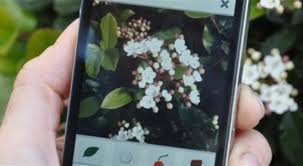
Breaking News
 The Fear-Mongering Rackets of the US National-Security State
The Fear-Mongering Rackets of the US National-Security State
 Gen-Z flexes new-age political muscle in Nepal
Gen-Z flexes new-age political muscle in Nepal
 Trump to sign EO directing investigation of 'crypto' debanking: report
Trump to sign EO directing investigation of 'crypto' debanking: report
Top Tech News
 Methylene chloride (CH2Cl?) and acetone (C?H?O) create a powerful paint remover...
Methylene chloride (CH2Cl?) and acetone (C?H?O) create a powerful paint remover...
 Engineer Builds His Own X-Ray After Hospital Charges Him $69K
Engineer Builds His Own X-Ray After Hospital Charges Him $69K
 Researchers create 2D nanomaterials with up to nine metals for extreme conditions
Researchers create 2D nanomaterials with up to nine metals for extreme conditions
 The Evolution of Electric Motors: From Bulky to Lightweight, Efficient Powerhouses
The Evolution of Electric Motors: From Bulky to Lightweight, Efficient Powerhouses
 3D-Printing 'Glue Gun' Can Repair Bone Fractures During Surgery Filling-in the Gaps Around..
3D-Printing 'Glue Gun' Can Repair Bone Fractures During Surgery Filling-in the Gaps Around..
 Kevlar-like EV battery material dissolves after use to recycle itself
Kevlar-like EV battery material dissolves after use to recycle itself
 Laser connects plane and satellite in breakthrough air-to-space link
Laser connects plane and satellite in breakthrough air-to-space link
 Lucid Motors' World-Leading Electric Powertrain Breakdown with Emad Dlala and Eric Bach
Lucid Motors' World-Leading Electric Powertrain Breakdown with Emad Dlala and Eric Bach
 Murder, UFOs & Antigravity Tech -- What's Really Happening at Huntsville, Alabama's Space Po
Murder, UFOs & Antigravity Tech -- What's Really Happening at Huntsville, Alabama's Space Po
New App Aims To Be The "Shazam" For Plants By Identifying Species With Just A Photo

While it may not theoretically be a new app, PlantNet has just recently garnered attention as a result of successful updates that have exponentially increased its downloads. It was released last summer and has continuously improved its database to be more inclusive and accurate to help users.
PlantNet is an app that can identify the plant you're looking at based on a photo you take of it, making it the "Shazam" for plants. While image-matching is extremely difficult, considerably more than audio-matching like Shazam does, it's made easier when it's at least just limited to one, albeit immense, category: plants.
The app is meant to help identify wild plants for those that are out and about and find themselves wondering what species they're looking at, but it's being expanded to include domestic plants. With 6,400 plants in its database so far, the app is increasing its effectiveness and works by matching the picture you snap with the thousands in its database to find the plant you're looking at. Since the app uses your location (if you allow it to), identifying wildflowers is made easier by narrowing down what plant it could be by first narrowing down the region.

 France's Fiasco
France's Fiasco Tiny briefcase engine boosts EV range beyond battery power
Tiny briefcase engine boosts EV range beyond battery power 

